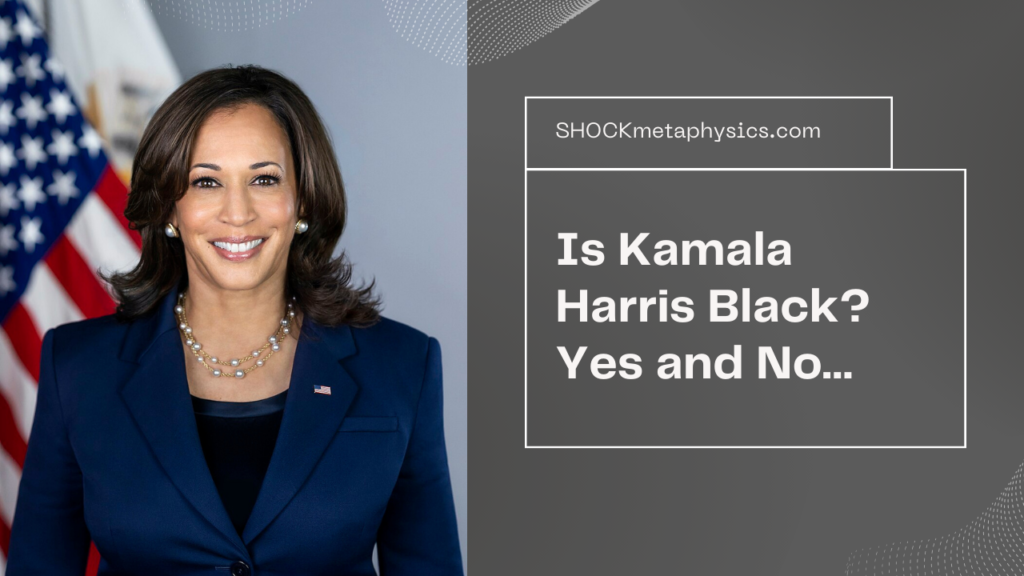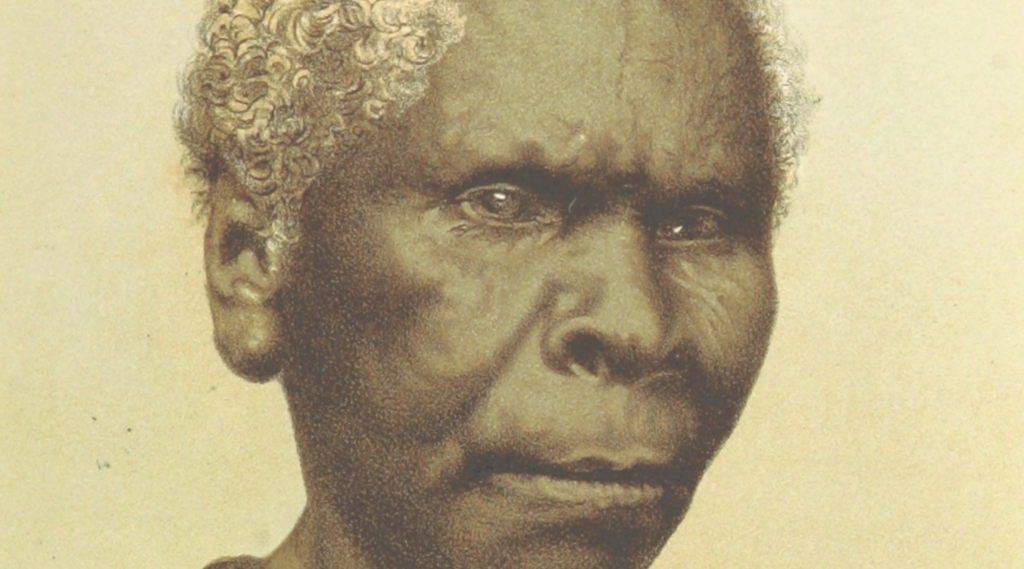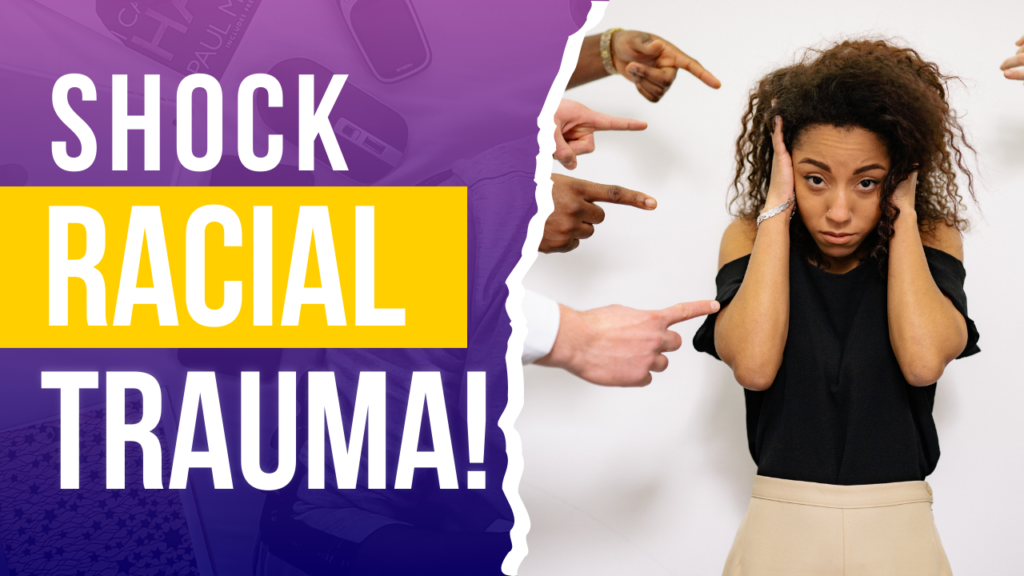
Powered By BlackTraumaGPT.com
Researched and Curated By Rev. Dr. Philippe SHOCK Matthews
(Black Trauma and Mental Health Specialist | Prompt Eng | GPT Dev | Research Scientist | Africana Phenomenologist | Black AI Corsortim co-Founder)
In a recent discussion I had with scholar, Dr. Ɔbenfo Ọbádélé Kambon, he unpacked the complexity about race, genetics, and societal structures, challenging common narratives and offering thought-provoking insights.
Dr. Kambon’s central argument revolves around the genetic basis of race. He argues that while often presented as a social construct, race finds its roots in distinct genetic markers. He points to the SLC24A5 (Solute Carrier Family 24 Member 5) gene as a prime example. This gene, specifically the presence of alanine at a particular locus, is prevalent in populations of African descent and is linked to melanin production. Conversely, non-Black populations often exhibit threonine at this locus. This difference, he posits, contributes significantly to the phenotypic differences observed between these groups.
Furthermore, Dr. Kambon uses the example of convergent evolution to illustrate how similar environments can lead to the development of similar physical traits, even in unrelated species. He draws parallels to arctic animals like polar bears, arctic foxes, and arctic owls, highlighting that their shared environment has selected for specific advantageous mutations. This concept is then applied to humans, suggesting that non-Black populations developed certain characteristics due to environmental pressures, likening them to “mutants” in the process.
However, Dr. Kambon doesn’t solely focus on genetics. He argues that these genetic differences have had profound behavioral and societal implications throughout history. He points to instances of genocide, oppression, and exploitation inflicted upon Black people, attributing them to a fundamental difference in worldview and a drive for self-preservation inherent in non-Black populations. He critiques the notion that economic or class systems are the root cause of these issues, arguing that they are merely tools employed to maintain a consistent pattern of “white on top, Black on the bottom.”
He highlights the historical treatment of Black people in various societies, from the transatlantic slave trade to the treatment of Black students in the USSR, to illustrate this point. These examples, he asserts, demonstrate that regardless of the proclaimed ideology, the underlying power dynamic remains consistent. Dr. Kambon contends that this behavior stems from a deeply ingrained instinct to protect one’s own genotype, which manifests in prioritizing the well-being of those who share similar phenotypic traits.
Furthermore, Dr. Kambon challenges the notion of achieving true sovereignty for Black people in a world where these power dynamics persist. He emphasizes that as long as this fundamental difference exists, Black people will always be vulnerable. He cites the tragic story of Truganini, the last full-blooded Tasmanian, as a stark warning about the potential consequences of failing to address this reality.

Truganini (1812-1876) was a significant Aboriginal woman of the Tasmanian people, often recognized as the last full-blooded Tasmanian Aboriginal. She played a crucial role in the resistance against European colonization in Tasmania and has become a symbol of the struggle for Aboriginal rights and recognition. Truganini’s life was marked by tragedy, including the loss of her community and family due to colonization and violence. Despite these hardships, she worked to keep her culture alive and is remembered for advocating for her people.
Throughout the conversation, Dr. Kambon advocates for Black empowerment and self-determination. He criticizes the tendency of some Black individuals to embrace ideologies that ultimately prioritize others over their own. He uses the analogy of a lion choosing to protect and nurture a hyena cub over its own, highlighting the absurdity of such behavior in the natural world.
Instead, he advocates for a return to natural principles of recognizing and prioritizing shared ancestry and phenotype. This return, he suggests, is crucial for the survival and prosperity of Black people. He promotes the Abibitumi conference and festival as a space for Black people to connect, strategize, and envision a future free from the constraints of existing power structures.
Dr. Kambon concludes by urging Black people to examine the systems and ideologies they choose to embrace critically. He stresses the importance of prioritizing their own well-being and that of their communities, advocating for a future where Black people are no longer relegated to the bottom rung of a hierarchy but instead empowered to determine their own destiny.
What is SLC24A5?

SLC24A5, or Solute Carrier Family 24 Member 5, is a gene intricately linked to human skin color. It encodes a protein that plays a key role in the regulation of melanin, the pigment responsible for the color of our skin, hair, and eyes. This gene’s influence on melanin production makes it a crucial factor in the spectrum of human skin tones.
The significance of SLC24A5 lies in its role in the melanin synthesis process within melanocytes, the specialized cells that produce this pigment. Different versions, or alleles, of the SLC24A5 gene contribute to the wide variety of human skin colors. The most well-known variant, rs1426654, is notably influential in the lighter skin tones typically found in European populations.
In the context of Black people, the ancestral allele of the SLC24A5 gene is predominant. This variant is associated with higher melanin production, resulting in darker skin tones. African populations, characterized by high genetic diversity, exhibit a wide range of skin colors, partly due to the varied expressions of SLC24A5. This diversity is a product of evolutionary pressures, with darker skin providing protection against the intense UV radiation in equatorial regions.
Understanding the genetics of skin color, including the role of SLC24A5, is essential for dispelling racist notions that have historically used physical differences to justify discrimination. The gene itself highlights human adaptability and the complex relationship between genetics and environment.
Moreover, the implications of SLC24A5 extend beyond genetics. In the medical field, knowledge of this gene can inform practices related to skin conditions and treatment effectiveness. Culturally, skin color holds profound significance for many Black individuals, deeply intertwined with personal and collective identity. Recognizing the genetic basis of skin color fosters greater appreciation for the beauty and resilience inherent in Black skin.
In essence, while SLC24A5 affects skin color across all human populations, its variants and expressions are particularly significant in understanding the rich diversity and adaptive history of Black people.
Is Kamala Harris Black or FBA?

FBA stands for “Foundational Black Americans,” a term coined by Tariq Nasheed to describe Black Americans who are descendants of the enslaved Africans brought to the United States during the transatlantic slave trade. This term aims to distinguish this group from other Black immigrants or their descendants who arrived in the United States voluntarily or under different circumstances.
Foundational Black Americans have a distinct historical lineage tied to the Africans who were forcibly enslaved and brought to the United States. This lineage is crucial as it connects the present social, economic, and political realities of Black Americans to the legacy of slavery and systemic oppression. Their unique cultural identity has emerged from experiences of slavery, segregation, and ongoing discrimination, which includes distinct expressions in music, art, language, and social practices.
The term FBA also underscores the importance of advocacy for reparations and justice specifically for the descendants of enslaved Africans in the U.S. Proponents argue that the unique historical experiences and resulting socio-economic disparities faced by FBAs necessitate specific policies and reparative measures.
Recognizing the diversity within the Black diaspora, FBA seeks to build a sense of community and solidarity among those who share this particular historical and cultural background. This solidarity is seen as essential in addressing systemic issues that disproportionately affect FBAs. Understanding “Foundational Black Americans” helps acknowledge their distinct historical and cultural experiences, promoting a nuanced approach to addressing their specific needs and challenges within the broader context of the Black diaspora.
For the record, Kamala Harris is Black, BIPOC or PoC…NOT FBA!
That is the debate. In this election FBAs are dammed in they do and will be more dammed if they don’t vote for Harris not because of her non-FBA status or her prosecutorial contribution to the term: Mass Incarceration but to stop Project 2025 from remotely being implemented that FBAs may not be fully aware of its cataclysmic implications and the irreparable harm it will have on both Black people and FBAs in pertuity.
FBAs are angry people (rightfully so)! However, angry people are emotional, and the emotion of anger cannot make logical decisions, individually and collectively. It is hard to see yourself in the future when your past and current life have been nothing but hell on earth. FBAs don’t feel it will get better, and they may be right, but let’s not make a decision that would definitely be worse.
What is BIPOC?
BIPOC stands for Black, Indigenous, and People of Color. This term is used to emphasize the unique experiences and struggles faced by Black and Indigenous communities, alongside other people of color. The term highlights the distinct histories of oppression, resilience, and contributions of these groups while fostering solidarity among marginalized communities.
Key Points about BIPOC:
1. Black: Refers to individuals of African descent, recognizing the specific historical and ongoing challenges faced due to systemic racism and the legacy of the transatlantic slave trade, Jim Crow laws, and other forms of racial discrimination.
2. Indigenous: Denotes the original inhabitants of a region, often marginalized through colonization. For example, in the United States, this includes Native American, Alaska Native, and Native Hawaiian communities, who have experienced land dispossession, cultural erasure, and various forms of systemic injustice.
3. People of Color (PoC): A broad term that includes all non-white individuals. This encompasses a wide range of ethnicities and experiences, highlighting the collective impact of racial discrimination while acknowledging that the experiences of these groups are not monolithic.
PoC is a broad and inclusive term used to describe individuals who are not white and who experience systemic racism and marginalization due to their racial or ethnic identity. The term encompasses a wide range of ethnicities and backgrounds, including but not limited to Black, Indigenous, Asian, Latinx, and Middle Eastern people.
Key Points about PoC:
1. Inclusivity: PoC is designed to be an inclusive term that acknowledges the shared experiences of racial discrimination and marginalization among various non-white groups.
2. Solidarity: The term fosters a sense of unity and solidarity among different racial and ethnic groups who face systemic oppression, promoting collective action and support.
3. Diverse Experiences: While it highlights common experiences of racism, the term also recognizes that the experiences of people of color are not monolithic and can vary widely based on specific cultural, historical, and social contexts.
Importance of PoC:
– Awareness: Using the term PoC helps raise awareness about the systemic inequalities and challenges faced by non-white communities.
– Advocacy: It supports advocacy efforts by providing a collective identity that can be mobilized for social justice initiatives, policy changes, and community support.
– Visibility: The term helps increase the visibility of non-white groups in discussions about race and racism, ensuring that their experiences are acknowledged and addressed.
By understanding and using the term PoC, individuals and organizations can contribute to more inclusive conversations about race and work towards greater racial equity and justice.
Why BIPOC is Important to 2nd Frequency:
– Centering Specific Histories: BIPOC specifically names Black and Indigenous people to bring attention to their particular histories and struggles, which are often distinct and more severe due to the unique forms of racial violence they have endured.
– Solidarity and Inclusivity: The term fosters a sense of solidarity among all people of color, recognizing shared experiences of racial oppression while also acknowledging differences in those experiences.
– Promoting Awareness and Advocacy: Using BIPOC encourages more nuanced conversations about race and racism, promoting awareness, advocacy, and policies that address the specific needs of these communities.
The Othering of FBAs (The MAGA Protocol)
Othering is a process in which certain groups or individuals are defined and labeled as different or outside the norm, often to justify their marginalization or exclusion. This practice creates an “us versus them” dynamic, where the dominant group views those who are different as inferior, alien, or unworthy.
Key Aspects of Othering:
1. Dehumanization: Othering often involves seeing and treating people as less than fully human. This can manifest through language, stereotypes, or actions that strip away the individuality and dignity of the marginalized group.
2. Stereotyping: Simplified and often negative generalizations about a group are used to define and judge individuals based on preconceived notions rather than personal experience or understanding.
3. Marginalization: Othered groups are often pushed to the margins of society, denied equal access to resources, opportunities, and rights. This can occur in various areas such as education, employment, housing, and healthcare.
4. Cultural Imperialism: Dominant groups impose their own cultural norms and values, often viewing other cultures as inferior or irrelevant. This can lead to the erasure or devaluation of minority cultures and traditions.
Consequences of Othering:
– Social Division: Othering creates and reinforces divisions within society, fostering mistrust, fear, and hostility between groups.
– Mental Health Impact: Being othered can lead to feelings of alienation, low self-esteem, and mental health issues such as anxiety and depression.
– Discrimination and Violence: Othering can justify discriminatory practices and even violence against marginalized groups, as they are seen as less deserving of empathy and rights.
– Systemic Inequality: By justifying unequal treatment, othering contributes to the maintenance and perpetuation of systemic inequalities and injustices.
Examples of Othering:
– Racial Othering: In the context of racism, people of color are often othered by being depicted as fundamentally different from white individuals, leading to racial discrimination and segregation.
– Cultural Othering: Immigrants and their descendants may be othered by being portrayed as unassimilable or as threats to the dominant culture.
– Gender and Sexuality: LGBTQ+ individuals often face othering through heteronormative assumptions and stereotypes, leading to exclusion and discrimination.
Addressing and Combating Othering:
– Education and Awareness: Increasing awareness and understanding of the harms of othering and promoting inclusive education that values diversity.
– Empathy and Dialogue: Encouraging empathy and open dialogue between different groups to break down stereotypes and build mutual respect.
– Policy and Advocacy: Implementing policies that promote equality and protect the rights of marginalized groups, alongside advocacy efforts that challenge systemic discrimination.
– Representation: Ensuring diverse and accurate representation of marginalized groups in media, education, and public discourse to counteract stereotypes and promote inclusion.
I will close with the quote from Charles Darwin: “Wherever the European had trod, death seemed to pursue the aboriginal.” This quote is from The Voyage of the Beagle, specifically in Chapter 19, where Darwin discusses the impact of European colonization on indigenous populations across various regions, including the Americas, Polynesia, the Cape of Good Hope, and Australia.
Darwin observed that the indigenous populations were rapidly decreasing due to several factors introduced by Europeans, such as diseases, the introduction of alcohol, and the destruction of native wildlife, which were crucial for their survival. He also mentioned a “mysterious agency” at work, contributing to the decline of these populations wherever Europeans settled.
Brought To You By…
- [IMMEDIATE DOWNLOAD] Know Your Rights eBook by the Law Office of Keith J. Staten https://bit.ly/4bD3MbK
- Enhancing Cognitive Performance: The Power of Neuromelanin Boosters https://t.ly/S-ePs
- FREE web series: Nothing is Wrong with Black People…Something Happened to Black People: https://bit.ly/3FJCsLo
- BlackTraumaGPT http://blacktraumagpt.com/
- MyGuardianDoc™ https://bit.ly/3TlgPaE – Your One-Stop for On-Demand Compassionate Medical Guidance, Urgent Care, Primary Care, and Virtual Second Opinions, all provided by licensed Medical Doctors.
Enjoying Our Content?
Become a member of our Patreon to get the latest research on Racial Black Trauma and learn the hidden science behind why 1st Frequency Black people are God’s/Amma’s greatest creation! https://www.patreon.com/revshock. Or buy Rev. SHOCK a Coffee! https://bit.ly/3yg5D7A


Book A Discovery Call
Are you ready to SHOCKtrauma? Click HERE now to book a discovery call with Rev. Dr. Philippe SHOCK Matthews

Get Social with Doc SHOCK:
PATREON: https://t.ly/mjksf | REV. DR. SHOCK (PERPLEXITY PAGE): https://t.ly/ppjwh | SOLO: https://solo.to/revshock | BIO: https://t.ly/Ko_y_ | BLOG: https://t.ly/j6bh0 | PODCAST: https://t.ly/cB5GD | ENDORSEMENT: https://t.ly/jFErO | THREADS: https://t.ly/SoKkT | IG: https://t.ly/XsN8f | FB: https://t.ly/R3r9Y | X: https://t.ly/iJ-wy | LINKEDIN: https://t.ly/GZ0pe | TIKTOK: https://t.ly/zfp60 | BLACK TRAUMA GPT: https://t.ly/vswbs | BLACK AI CONSORTIUM: https://t.ly/uiRZN | BOOKS BY PM: https://t.ly/vvHMd
